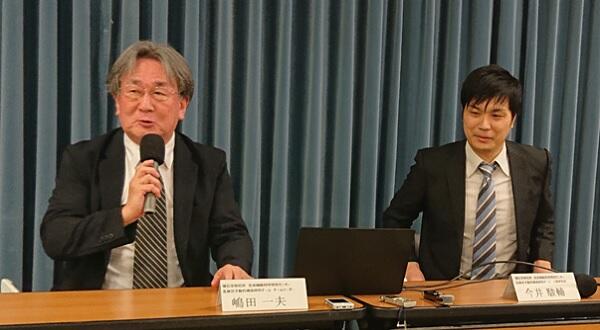GPCRs (G protein-coupled receptors) are crucial drug discovery targets. Thirty-two percent of marketed drugs target these receptors, with eight of the 20 best-selling drugs in the world target GPCRs. A research team led by Team Leader Ichio Shimada, Senior Scientist Shunsuke Imai, and Team Leader Mikako Shirouzu of the Center for Biosystems Dynamics Research at RIKEN, has shed light on the mechanism by which the µ-opioid receptor (MOR), a GPCR, is activated by an allosteric modulator. Shimada commented, "Until now, allosteric modulators have been known to increase activity, but we did not know how. The mechanism revealed in this study will open new avenues to develop substances." The results were published in Nature Communications.

MOR is the target of action of opioid analgesics such as morphine. However, due to side effects, there are hopes for increasing efficacy with the lowest possible dose. BMS-986122 was reported as an allosteric modulator of MOR in 2013 but its mechanism of action remained unknown. GPCR drugs include inverse agonists that inhibit basal activity, standard inhibitors, partial agonists, and full agonists that exhibit maximal activity. This means that allosteric modulators can be combined with full agonists to further enhance GPCR activity.
The group has previously undertaken solution nuclear magnetic resonance (NMR) analysis and showed that MOR is in a dynamic equilibrium among three conformations, namely, inactivated, partially activated, and fully activated conformations, and that the ratio of these conformations varies depending on the drug bound to the extracellular pocket. Their analysis also revealed that BMS-986122-MOR binding decreases the population of the partially activated conformation and increases the population of the fully activated conformation, resulting in increased MOR activity. However, specific structural changes occurring upon BMS-986122 binding were unclear.
In this study, the research team determined for the first time the cryoelectron microscopy structure of MOR in complex with BMS-986122 in a full agonist-bound state and a G protein. The results revealed that BMS-986122 bound to the cell membrane side of transmembrane helix 3 of MOR, without major conformational changes compared to the unbound state. However, the density between the side chains of arginine at position 167 (R167, in transmembrane helix 3) and tyrosine at position 254 (Y254, in transmembrane helix 5) was observed to be slightly stronger than that in the unbound state. Therefore, they substituted Y254, tyrosine, with phenylalanine to preclude the interaction between R167 and Y254 and found that the activation was lost.
Detailed observations by NMR revealed that the allosteric modulator binding to transmembrane helix 3 of MOR from the cell membrane side facilitates the interaction of R167, which faces the inside of the molecule, with Y254. The observations further revealed that the resulting interaction of these residues stabilizes the fully activated structure in which transmembrane helix 6 is opened and increases its population, resulting in an increase in the MOR activity.
Imai said, "By looking at the dynamic changes in NMR, we were able to reveal the lateral interactions. Some reports have argued that no structural changes occur in other GPCRs but the techniques used in this study open a path to create new GPCR-targeted drugs."
Journal Information
Publication: Nature Communications
Title: Structural and dynamic insights into the activation of the µ-opioid receptor by an allosteric modulator
DOI: 10.1038/s41467-024-47792-6
This article has been translated by JST with permission from The Science News Ltd. (https://sci-news.co.jp/). Unauthorized reproduction of the article and photographs is prohibited.




